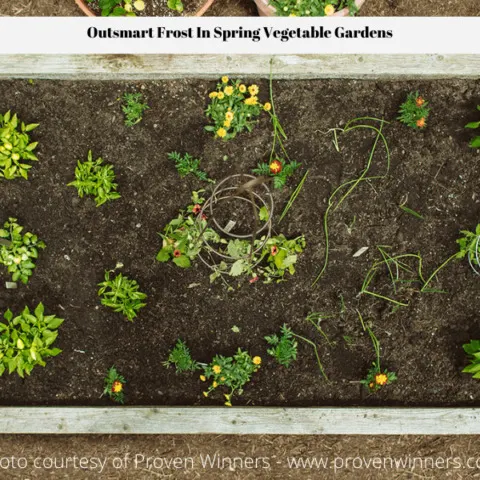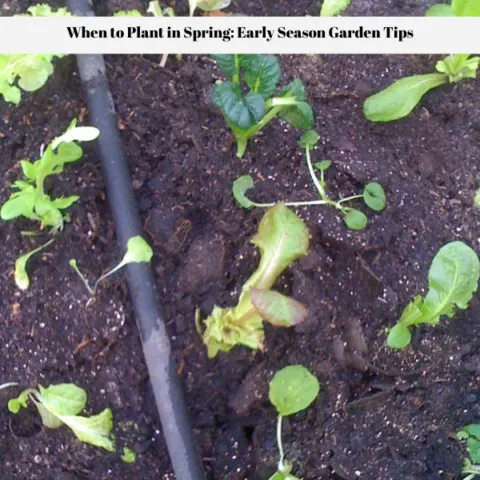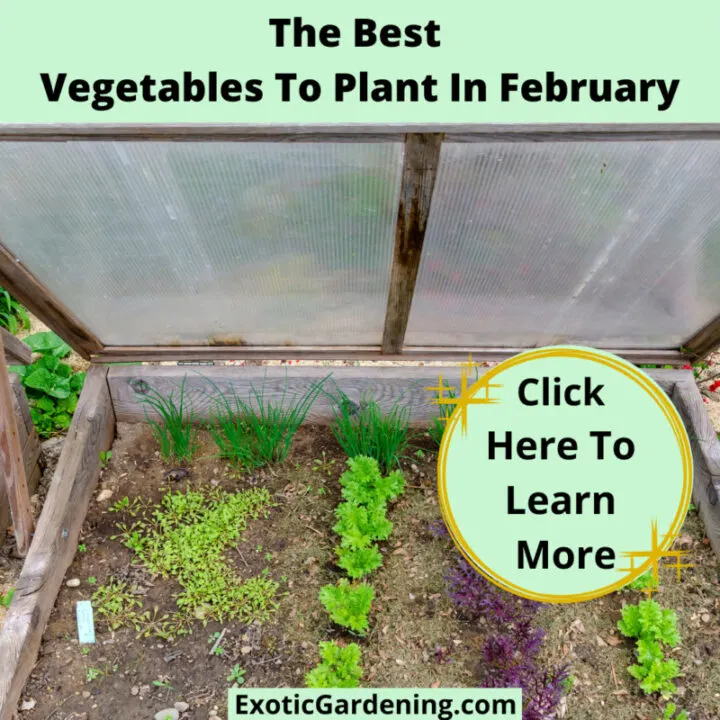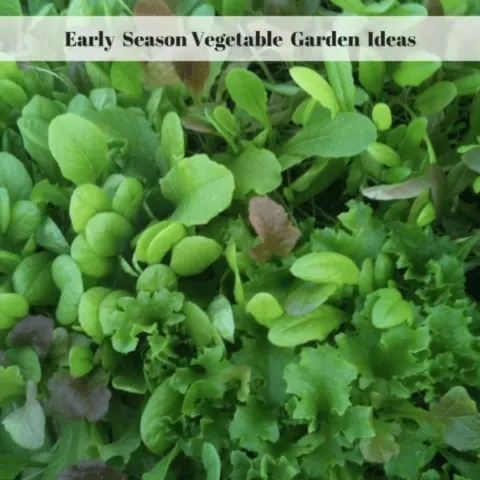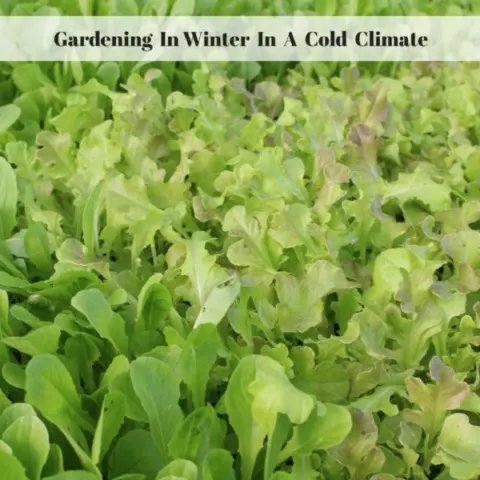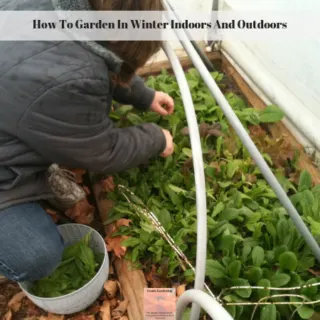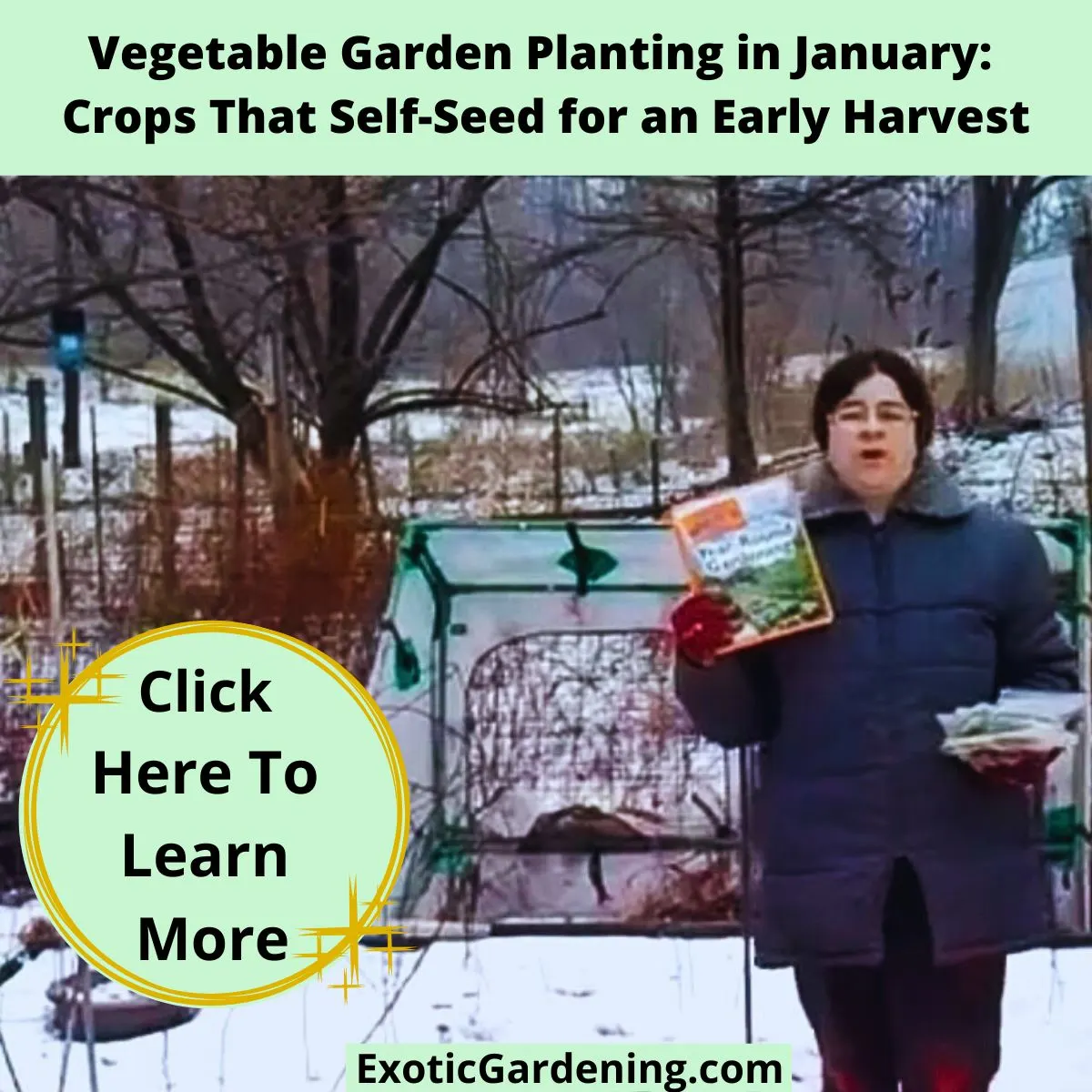If you’re searching for winter gardening survival tips, you might be surprised to learn that my journey with this topic started all the way back in 1999 - right before the world thought computers would crash and civilization might crumble.
I was working in retail back then, watching people frantically buy bottled water, canned food, and kerosene lamps in preparation for Y2K.
While others worried, I quietly built my own version of preparedness - a cozy greenhouse filled with herbs, tomatoes, and tropical plants.
I figured, if the world shut down, at least I’d still have fresh vegetables and warmth from my wood burner.
Looking back now, those days remind me how gardening, especially in winter, is more than a hobby - it’s a form of resilience, self-reliance, and peace of mind that every gardener can benefit from today.

Flashback: The Y2K Winter Garden
With the new millennium fast approaching and another Christmas nearly over, I couldn’t decide whether to worry about the Y2K rumors or laugh them off.
The world was buzzing about potential power failures and technology meltdowns, but I was focused on something much simpler - how to keep my plants thriving through the cold.
At that time, I worked in retail and watched people scramble for emergency supplies.
They stocked up on canned goods, batteries, and gallons of water.
Meanwhile, I was preparing in my own way - with seeds, soil, and a warm greenhouse.
With a wood burner inside my greenhouse, I felt ready for almost anything.
I had tomatoes ripening, herbs growing strong, and the comforting scent of green life surrounding me.
Even if the power failed, I could keep my plants - and myself - warm.
I encouraged others to do the same: keep rolls of plastic, scrap wood, and PVC handy to create an instant greenhouse if needed.
A small space heated by kerosene, wood, or even a charcoal grill could keep vegetables growing and spirits high.
Some even housed chickens or rabbits in small cold frames - an old trick that adds heat, fertilizer, and a bit of food security, all at once.
Then and Now: What I Was Growing
Back then, I spent my weekends germinating exotic and tropical seeds, fully expecting life to continue as usual.
One of my greatest joys that week was the tiny green sprout of a Canary Vine - proof that hope, like a seed, always finds a way to grow.
Here’s what I was experimenting with:
-
Passiflora incarnata and
-
Passiflora caerulea (passionflowers)
-
Clitoria ternatea (“Butterfly Pea”)
-
Gloriosa rothschildiana (“Glory Lily”)
-
Cananga odorata (“Ylang Ylang”)
-
Clianthus
-
Acacia nilotica (“Gum Arabic”)
-
Pimenta dioica (“Allspice”)
Even then, I was fascinated by the challenge of germinating tropical plants in an Indiana winter.
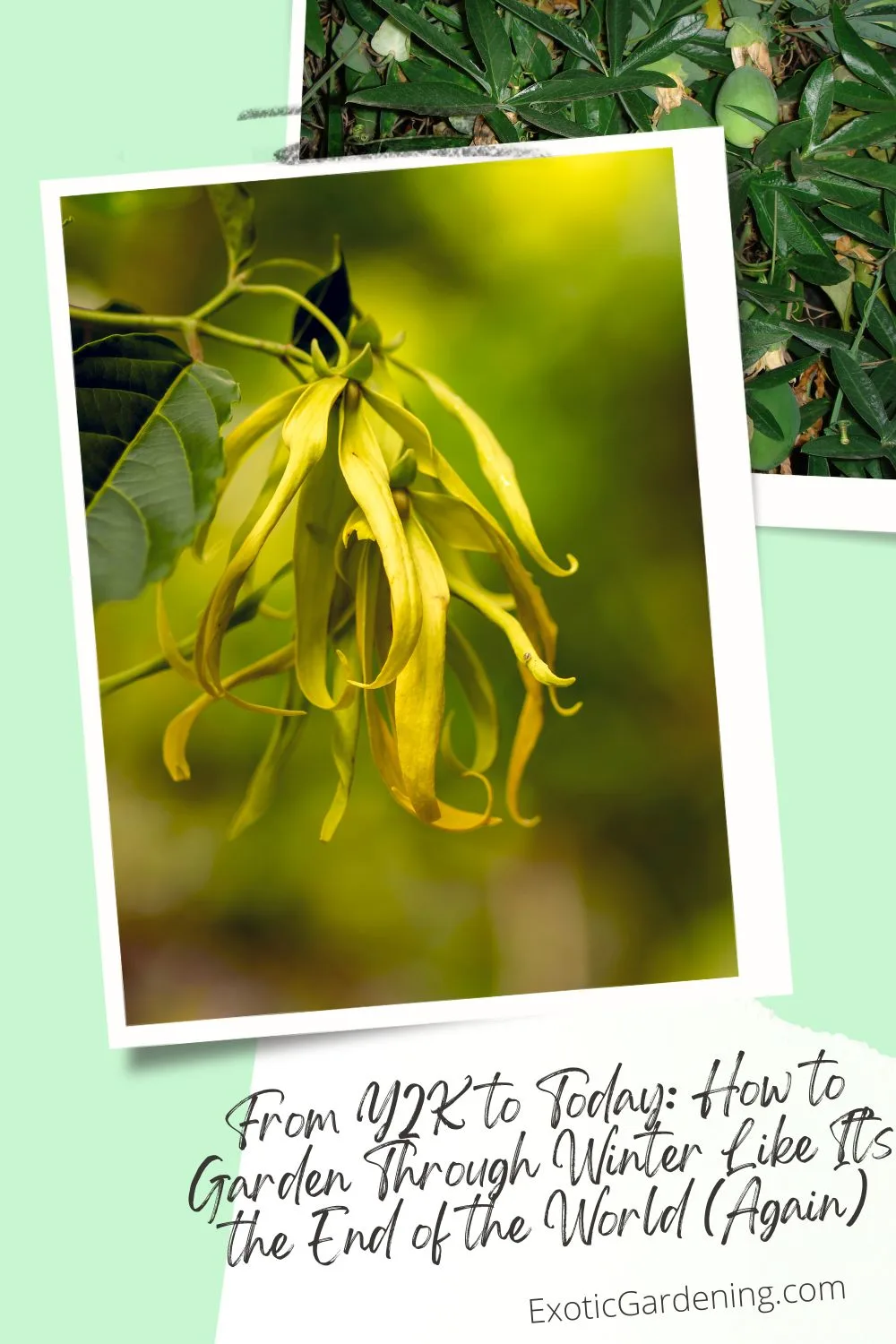
Germination Lessons from Y2K
Here are some of my original germination notes - still useful for gardeners today:
-
Pimenta dioica (Allspice): Plant ⅜” deep in sandy loam soil, bright light, high humidity, and constant warmth.
-
Cananga odorata (Ylang Ylang): Slow to germinate - up to five months! Needs bright light, warmth, and slightly moist soil.
-
Gloriosa rothschildiana (Glory Lily): Plant ½” deep in well-draining soil, keep warm and damp under bright light.
-
Clitoria ternatea (Butterfly Pea): Cover lightly with sandy soil, maintain warmth, humidity, and bright light.
-
Acacia nilotica: Pre-soak seeds in hot water for 24 hours, changing water several times, then plant ¾” deep and keep warm and moist.
Even now, these notes hold up.
The difference today is that gardeners have more tools - seed heat mats, humidity domes, LED grow lights, and soil sensors - to make germination faster and easier.
Modern Winter Gardening Survival Tips
Fast-forward to today, and the lessons from Y2K feel more relevant than ever.
Between unpredictable weather and supply chain issues, being able to grow food year-round is a skill worth having.
Here’s how to do it:
-
Invest in a Cold Frame or Mini Greenhouse.
Even a simple setup extends your season and protects greens from frost. -
Grow Fast, Cold-Tolerant Crops.
Think lettuce, kale, spinach, radishes, and mache. They thrive in cooler weather. -
Use Thermal Mass for Heat.
Water jugs, bricks, or stones absorb heat during the day and release it at night. -
Add LED Grow Lights Indoors.
These make it easy to grow herbs and greens anywhere - even in a basement or spare room. -
Keep Backup Heat Sources.
A small wood stove, solar generator, or kerosene heater can make a huge difference if the power goes out. -
Try Winter Composting.
Compost generates natural heat - great for warming nearby beds or greenhouse soil.
DIY Cold Frame and Mini-Greenhouse Ideas
If you don’t have a full greenhouse, build your own cold frame with these modern materials:
-
PVC or conduit frame covered with UV-resistant plastic
-
Old windows or storm doors hinged for easy ventilation
-
Hay bales or bricks to insulate the base
-
Solar lights or heat cables to extend growing time
You can even keep a few chickens nearby for extra warmth - just like the Y2K days!
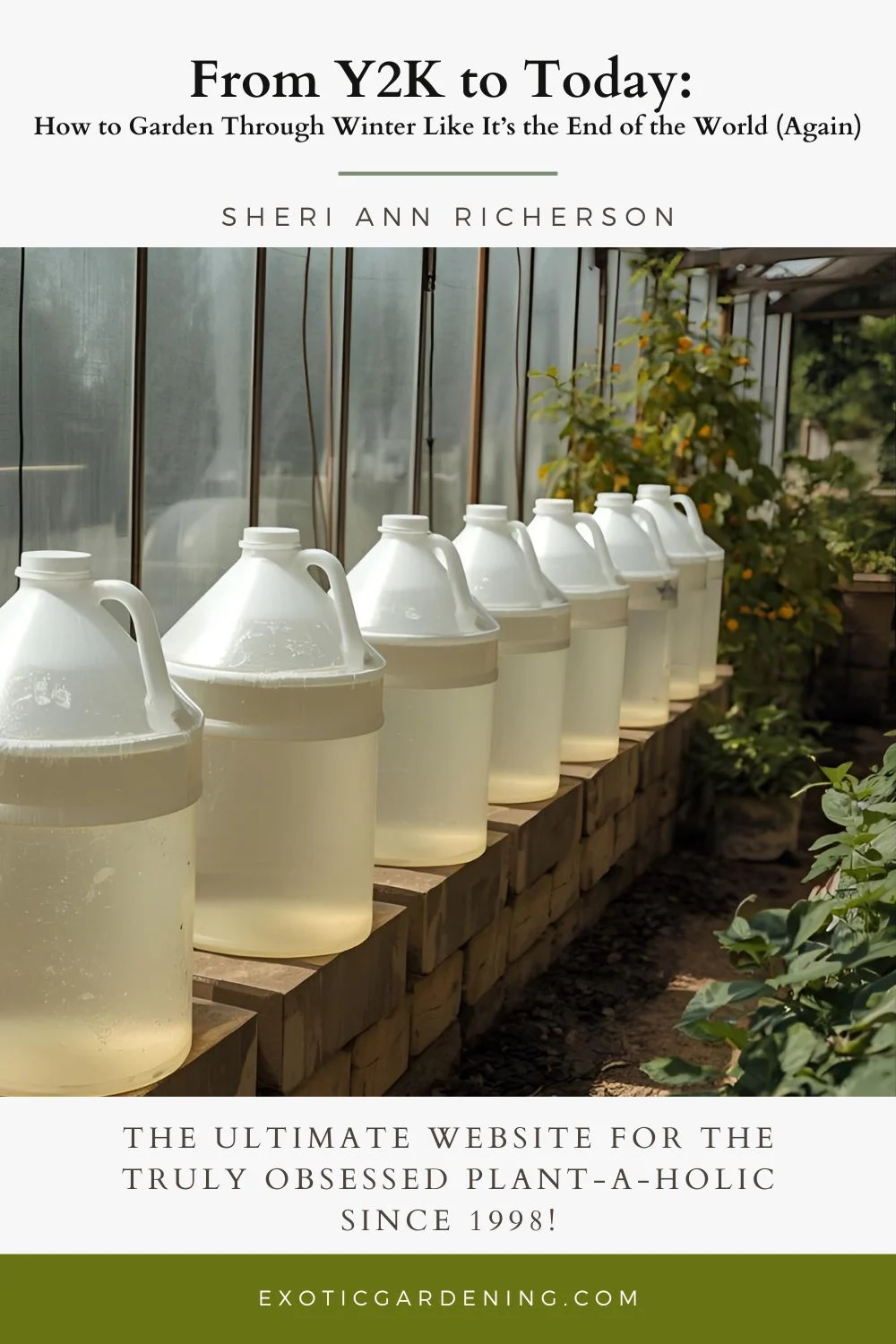
Full-Circle Reflections
Back in 1999, I didn’t know if Y2K would bring chaos or calm.
But I knew one thing for sure: gardening gave me peace, purpose, and a plan.
Today, I still believe in those same principles.
Whether you’re growing microgreens on your kitchen counter or tending a full winter greenhouse, every seed is an act of hope and independence.
So maybe the world didn’t end in 2000 - but the desire to live simply, sustainably, and securely never went away.
And for gardeners like us, that’s what really matters.
Key Takeaway
Gardening through winter - whether during Y2K panic or today’s uncertainties - isn’t just about survival. It’s about thriving, one sprouting seed at a time.
Winter Gardening FAQ
Q: Can you really garden through the winter?
A: Absolutely! With cold frames, mini-greenhouses, or even a few grow lights indoors, you can grow fresh greens, herbs, and root vegetables all season long.
Q: What’s the best crop to start with in cold weather?
A: Spinach, kale, lettuce, and radishes are my go-to choices - they handle frost beautifully and grow fast.
Q: How do you keep your plants from freezing?
A: I use layers - row covers, 6 mil. plastic, straw mulch, and thermal mass (like water jugs that absorb heat during the day). Even small setups can make a big difference!
Q: Do you need special soil or fertilizer in winter?
A: Not really - just keep your soil loose, rich in compost, and slightly moist. Winter plants grow slower, so they don’t need as much feeding.
Q: What’s one simple “prepper” trick every gardener should know?
A: Keep a roll of greenhouse plastic and some scrap wood on hand. If things ever get tough (like Y2K made us think they would!), you can build a mini-greenhouse in an afternoon.
Q: How can I tell if my soil is warm enough to plant?
A: Get a soil thermometer — it’s one of the simplest but most overlooked tools. Most cold-tolerant crops will germinate around 40°F (4°C), but you’ll see faster results once soil temps hit 50°F (10°C).
Q: Do I still need to water when it’s cold?
A: Yes! Plants still transpire even in cool weather, but slower. Water early in the day so leaves dry before nightfall and avoid shocking roots with ice-cold water.
Q: How do I keep tunnels or cold frames from overheating on sunny days?
A: Ventilation is key! Even in winter, the sun can heat things up fast. Prop the lid open slightly or install automatic vent openers that react to temperature changes.
Q: What’s the best mulch for winter beds?
A: Straw or shredded leaves work great. I like to layer them a few inches deep in fall, then pull them back slightly when I plant. It’s nature’s blanket and compost in one.
Q: Can I start seeds directly outdoors in winter?
A: Yes - it’s called winter sowing. You plant seeds in covered containers (like milk jugs or bins) and let nature handle the timing. When it’s warm enough, the seeds germinate on their own.
Q: What’s your secret to keeping a winter garden thriving in Indiana’s unpredictable weather?
A: Layering. I combine a cold frame inside a greenhouse and use row covers over my plants. It’s like dressing your garden in multiple coats - adaptable, affordable, and effective.
The Backside Of The Gardening Calendar
Use Frost To Your Advantage
Did you know that there is a way to use frost to your advantage in the garden in both spring and fall? Read on to learn more.
Outsmart Frost in Spring Vegetable Gardens
Understanding how to outsmart frost in spring vegetable gardens leads to earlier harvests, less plant damage and a longer growing season.
When to Plant in Spring: Early Season Garden Tips
Know when to plant in spring by using these early garden season tips. These tips will allow you to get a head start on your vegetable garden.
Jump Start The Spring Garden With Winter Sown Vegetables
Get a jump start on the spring garden with winter sown vegetables. Once you know how to do this, its easy to grow vegetables year round.
Vegetable Garden Frost Protection: Extending Your Winter Gardening Season
Discover essential tips and techniques for vegetable garden frost protection. Extend your winter gardening season with our guide.
Gardening In Cold Climates In Early January
Gardening in cold climates in January without supplemental heat is possible. The seeds, plants and garden structure is what matters.
Vegetables to Plant in January: Garden Tips for Year-Round Growing
There are a number of vegetables to plant in January as well as some flowering plants. Indoors or out, find out dates to start in Indiana.
The Best Vegetables To Plant In February
There are a number of cool season vegetables to plant in February directly in the garden even if you live in a cold climate.
Embracing The Beauty of Winter: A Guide To Winter Flowering Plants
Elevate your garden with winter flowering plants. Explore cold-hardy varieties, garden prep, and nurturing tips.
How To Garden In Winter Indoors And Outdoors
Learn how to garden in winter indoors and outdoors. There are many vegetables and herbs that don't mind the cold or thrive in containers.
Save Money! Harvest Free Vegetables Year-Round In Any Climate!
Yes, you can harvest vegetables year-round, even if you live in a cold climate by planting at the right time and gardening under cover.
September Is Here But Don't Quit Gardening Now!
September is here but there is no need to quit gardening. Plant those cool weather crops from seed or transfer plants into the garden.
Monkshood Flowers For The Fall
There are some late blooming flowers for the fall season such as monkshood. Autumn monkshood is known to bloom from September to November!
Vegetable Garden Planting in January: Crops That Self-Seed for an Early Harvest
Vegetable garden planting in January with self-seeding crops gives you early spring harvests straight from the snow.


